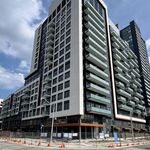The main reason is the biggest player in the room the TTC dosn't want to intigrate it's fare with the other sytems. In away it makes sense that the money spent by the customer should go to the agency they use. For example if I want to go downtown from where I live I can use the TTC or take the go train. The go train cost almost double TTC fare to use because it's a different service, would I use it more if I could pay the same as TTC fare maybe.
But it shouldn't be that simple, which is the problem.
Your example ignores the person who takes TTC (or, heaven forbid, a 905 agency) to the GO or otherwise transfers between systems. Who gets the money then?
To use the obvious example, if a YRT bus goes by my house and I avoid taking it to TTC, choosing to drive instead, then TTC gets the money instead of YRT, simply because of how the fare is structured. They've effectively stolen my fare (and ridership count). GO fares will definitely change relative to TTC fares once RER comes online, though no doubt GO service will remain higher as it's a "premium" service.
Anyway, TTC doesn't treat riders like "customers." If it did (to use the same cross-border example) it would allow its riders to board empty YRT buses at Steeles, instead of making them wait for packed TTC buses. But, as you point out, TTC wants that money; ensuring efficient movement of riders from Point A to B is a secondary concern.
It's a systemic issue.
And, as I've said before, we have to stop pretending we're reinventing the wheel here. Pretty much every "world-class city" you can name (London, New York, Paris, Chicago etc.) has a
regional authority, usually with local agencies operating within it. And they've had them for decades. They do zones or charge different fares for different modes and otherwise do many things from which we could borrow best practices.
It's time to realize, as much as Toronto loves its flat flare (and it's toll-free highways, for that matter), that there are better systems out there and that the money needs to flow from serving riders first.
As for this fare-integration strategy, it's starting to remind me of the Investment Strategy which took 4 years to get from draft to final form, only to go straight to the shelf due to political cowardice. 2018 is a provincial election year so fingers crossed they'll have the stones to force the issue before there's a change at the top. With the Spadina line and RER coming online over the next few years, a proper solution is required sooner rather than later.




